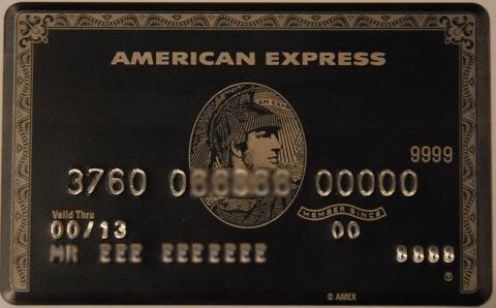
Not that kind of euro. Alright, as long as we're making jokes, and this is probably the 3rd image we've run of a guy with a purse, what is the purpose behind this? What does a man ever need to carry beyond keys (one pocket), a wallet (another pocket), and a phone (third pocket)? With a standard 4-pocket pair of pants, that leaves one pocket free for lollipops to give to itinerant children.
Unless we’re stuck in a foreign airport, the vast majority of us don’t exchange currencies. But good Lord, do we hear about it. Will (European country) drop the euro? Will its value fall through the floor? Is the recent talk about the euro’s troubles just an indirect ploy to get us to buy gold? How does this affect the U.S. economy?
Nobody knows anything. Nor does anyone remember anything.
Financial journalists have to report every 1¢ swing in the value of the euro as of great significance. Each movement the markets make in a given day – even a given hour – is reported upon ad nauseam. Why? Honestly, the biggest reason is that there’s a 24-hour news cycle to fill. It’s human nature to overemphasize the importance of how we each choose to spend our time. If you don’t believe that, find a teacher and listen to her yammer about how important her job is. The same applies to everyone whose job it is to provide you with financial information. Something utterly unimportant – the euro losing a tiny bit of its value vis-a-vis the dollar – can inspire a 6-person roundtable discussion on CNBC.
That being said, some wags are already calling for the euro’s funeral dirge. Here’s why, kind of:
The euro entered the world on the first day of 1999, trading at $1.174. A year later, it fell to the point where it equaled the dollar for the first time. That fall the euro sank to its nadir, around 84¢. It again outvalued the dollar in July of 2002, briefly (and barely) dipped below again, and has been worth at least a dollar since that November. In July of 2008 it reached its zenith, trading at $1.58. Now it sits at around $1.32, and that alone gives many cause to question the euro’s future.
The euro is the national currency of France, Germany, Italy, Spain, Greece, Andorra, Montenegro, Kosovo, Vatican City, San Marino, Monaco, Slovenia, Slovakia, Portugal, the Netherlands, Belgium, Ireland, Luxembourg, Malta, Finland, Estonia, Cyprus and Austria.
Notice any European country missing?
Yes, Switzerland too. We were thinking of a nation slightly larger. Come on, you can do this. Bad food, no fluoride, used to have an Empire that the sun never set on?
Correct, the United Kingdom.
In 1990, back when the euro was not even a foul thought in its father’s head (a line stolen from Phil Hendrie for just such an occasion), Prime Minister Margaret Thatcher was steadfast in her opposition to eventually dropping the pound sterling in favor of a transnational currency. Steadfast, and outnumbered. Her objections had nothing to do with convenience, national pride or exchangeability. They were much more pragmatic.
Thatcher argued, in print no less, that a modern and robust economy – we’ll call it Country A – and a basket case like Country B can’t share a currency. For one thing, a transnational currency would lower (and has lowered) interest rates. The weaker the replaced national currency, the greater the decrease in the interest rate. Which makes sense – a transnational replacement currency is necessarily weaker than the strong currencies it replaced and stronger than the weak ones it replaced. The interest rate is the price of money. The cheaper money is – i.e., the less it costs to borrow – the lower the interest rate. The countries that had weak currencies going in, such as Portugal and Italy, now found it easier to borrow money. And borrow they did.
Greece, too. Thatcher even mentioned Greece by name. It’s “Country B” above. Country A is Germany, Europe’s most powerful.
There are legitimate advantages to a weak currency; one weak when compared to others, that is (as contrasted with one weak when compared to itself historically.) For one thing, it makes exports cheaper. The U.S. dollar has lost around 10% of its value relative to the New Zealand dollar over the past year. American exporters who would never have been competitive enough to sell to Kiwis before have a brand new market/clientele. To a New Zealander, American goods are now that much cheaper. When a small country has the weak currency and larger countries have the comparatively strong ones, the effect on the small country’s potential for exports (and hence growth) is even greater. But the American dollar and the New Zealand dollar are necessarily different and unequal. It’s when two countries’ currencies should differ, but are prevented from doing so, that problems exacerbate.
Trouble arises when a small country (Greece) can now borrow more money than it did under its old currency, while sharing the new currency with stronger economies. When the euro become reality, it artificially made Greece’s currency more robust while doing the opposite to Germany’s. Greece could borrow more than before. And did. Boy, did it ever. Overextended itself, couldn’t pay its bills. So Germany, by virtue of being the local heavyweight, has to lend billions to Greece. If it doesn’t, Greece has incentive to quit the euro. A less-circulated euro means other weak countries would want to follow suit.
This is what the pound sterling has done with respect to the euro since the latter’s inception. The higher the graph, the stronger the pound. The Brits might be buying goods cheaply from the continent while having to sell them elsewhere, but at least they’re not worrying about their currency imploding.
One more thing. To use the euro, a country needs to qualify. (Several other countries are in line to adopt it as their currency: Latvia, Lithuania, and Denmark, among others.) Qualification means keeping inflation and long-term interest rates under particular thresholds, and the same for debt and deficit (relative to gross domestic product.)
Guess what? When all a government has to do to get access to cheap money is provide certain numbers to the European Central Bank, that government wants those numbers to look as good as possible. Honesty is at best a secondary goal here. The Greeks lied through their ouzo-scented teeth. The Portuguese, Italians and Spaniards weren’t all that forthright either. But now, it’s too late for the ECB to say, “No, you have to go back to your original currency.” Don’t think for a moment that something similar couldn’t happen in the United States, with a Department of the Treasury telling enough lies to keep the cheap money flowing. There’s no transnational currency for the U.S. to back out of, but there’s plenty of economic havoc to wreak.
It’s hard to appreciate how an artifice can create such damage, but it can. In a healthy system, currencies can trade against each other in the open market, correcting imbalances and reinforcing the economic soundness of each currency’s issuing government. When drachma and marken are operating as de jure equals, Greece eats itself into a coma. Which Germany then has to arouse.
“Adapt or die” is a truism throughout life. It’s hard to adapt when you’re forcefully prevented from doing so.
This article is featured in:
**The Carnival of Personal Finance 357: Hotel Room Edition**




